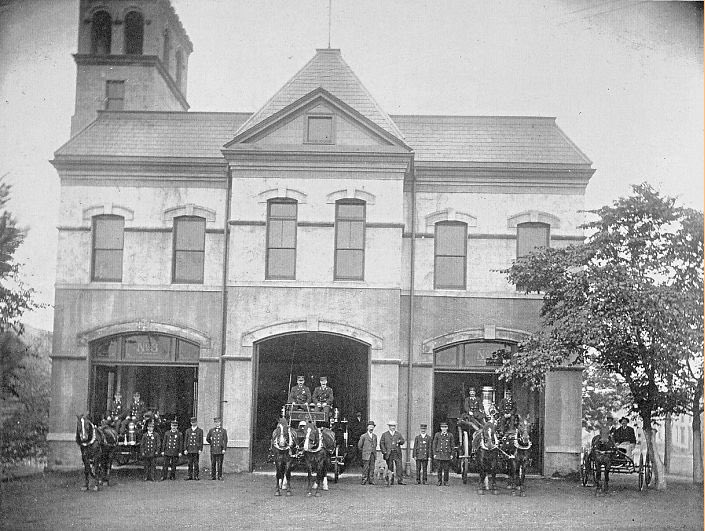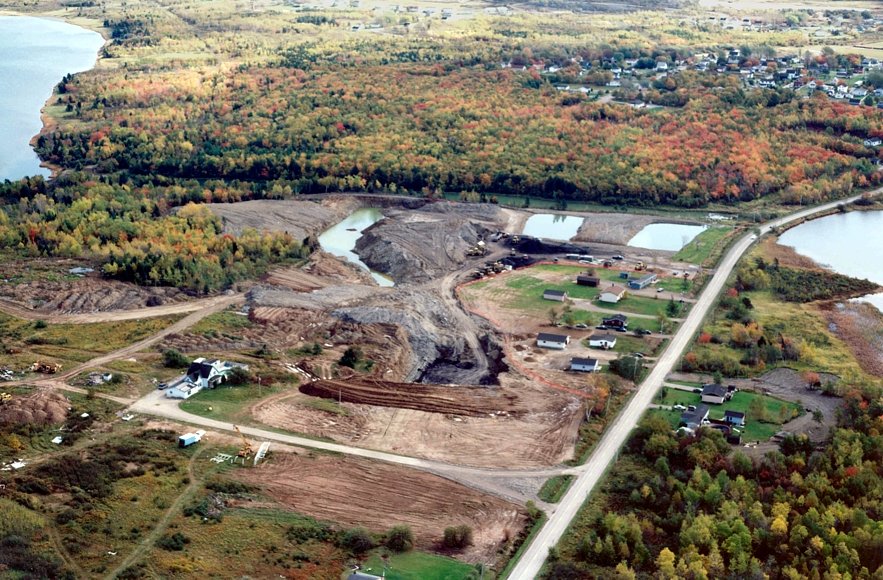Nova Scotia #salt saved lives this winter – all our road salt comes from the #Pugwash salt mine. With snowstorms now over (we hope!), here’s a history of salt mining in #NovaScotia!
#nspoli #cbpoli #capebreton
@MLAElizabethNS @ZannLenore

#nspoli #cbpoli #capebreton
@MLAElizabethNS @ZannLenore


327-342 million years ago, global sea levels rose and fell many times. This repeatedly flooded #NovaScotia with what we call the Windsor Sea. #NS was near the equator at the time so the sea also evaporated repeatedly in the heat.
#nspoli #cbpoli #capebreton
#nspoli #cbpoli #capebreton

The evaporation of sea water left deposits of successive layers of salt. This process was repeated for millions of years until the original salt beds were far below earth’s surface. Subterranean pressures and heat compressed the salt into #NovaScotia’s huge rock #salt deposits. 
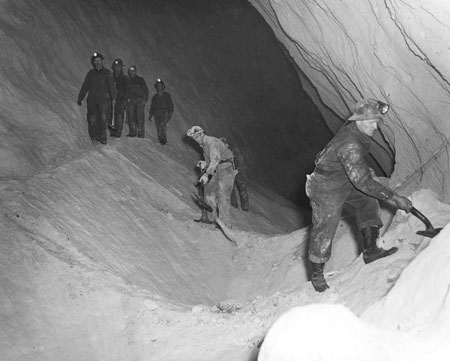
In pre-colonial times the existence of salt springs and brine pools in various parts of the province was known to the Mi'kmaq.
The first recorded attempt to extract salt in #NovaScotia occurred at Salt Springs, #PictouCounty, in 1813.
#nspoli #cbpoli @TimHoustonNS @karla_macf_pc
The first recorded attempt to extract salt in #NovaScotia occurred at Salt Springs, #PictouCounty, in 1813.
#nspoli #cbpoli @TimHoustonNS @karla_macf_pc

A 60 metre shaft was sunk to find the source of the brine found in #salt springs in the area. It was unsuccessful but a few years later a small amount of salt was produced by evaporating some brine.
#nspoli #cbpoli #capebreton #novascotia
#nspoli #cbpoli #capebreton #novascotia

Although #salt deposits in #NovaScotia occur in an arc stretching across #Hants, #Cumberland, #Pictou, #Antigonish, #Inverness and #CapeBreton Counties, the Malagash-Nappan-Pugwash area in #CumberlandCounty has historically been the focus of mineral development.
#nspoli #cbpoli
#nspoli #cbpoli

In 1912, farmer Peter Murray of #Malagash drilled a well, looking for water for his cows. When the water came out, it melted the ice and snow around it and it tasted salty.
#nspoli #cbpoli #capebreton #novascotia
#nspoli #cbpoli #capebreton #novascotia
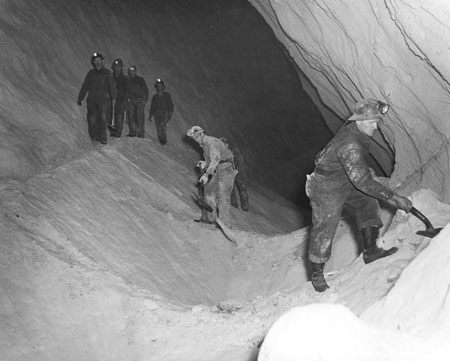
The general belief was that #salt water had seeped inland from the #NorthumberlandStrait, which is only 1,600 feet from the Murray farm, but the water in the well was actually saltier than sea water.
Murray was disappointed – the well was useless for his cattle.
#nspoli #cbpoli
Murray was disappointed – the well was useless for his cattle.
#nspoli #cbpoli

But he later realized that it was perfect for pickling. He would put the water in a barrel with pork and it made great salted meat. Word got around about his #salt brine and it attracted the interest of two men from New Glasgow: Robert Chamber and George Walker MacKay.
#nspoli
#nspoli

Robert Chambers (1880-1937) had been an engineer at Wabana Iron Mines, Bell Island, Newfoundland - his father was the discoverer of the Wabana deposit - before becoming Manager of Ore Mines and Quarries for the Nova Scotia Steel Company.
#nspoli #cbpoli #capebreton #novascotia
#nspoli #cbpoli #capebreton #novascotia

George Walker MacKay (1880 – 1972) was a civil engineer and had family money. His father, Forrest MacKay, was co-founder of the #NovaScotia Steel and Coal Company of Trenton.
In 1917 Chambers convinced MacKay that searching for #salt at #Malagash was worth a try.
#nspoli #cbpoli
In 1917 Chambers convinced MacKay that searching for #salt at #Malagash was worth a try.
#nspoli #cbpoli

The two formed a partnership and while Chambers remained in the employ of the #NovaScotia Steel Company, MacKay oversaw the drilling of test holes. A shaft was sunk and on Labour Day, 1918, the first #salt was hoisted. Soon they were taking out salt at a rate of 30-40 tons a day. 

Horse wagons hauled the salt to the nearest rail point, eight miles away.
#Malagash was #Canada's first rock #salt mine. Until then all Canadian salt came from evaporating salt brine.
The mine has a great origin story but running it was hard.
#nspoli #cbpoli #capebreton
#Malagash was #Canada's first rock #salt mine. Until then all Canadian salt came from evaporating salt brine.
The mine has a great origin story but running it was hard.
#nspoli #cbpoli #capebreton

It didn’t produce a reasonable profit for over two decades. At one point a majority of the company’s directors wanted to cease operating but MacKay and Chambers personally borrowed $50,000 from the Bank of #NovaScotia to purchase #Malagash Salt Bonds and keep the company going. 

The first mill was destroyed by a fire on July 28, 1923 which started from the diesel engine that ran either the hoist or mill (there were two engines). It burned for hours and consumed the mill and headframe.
#nspoli #cbpoli #capebreton #novascotia
#nspoli #cbpoli #capebreton #novascotia
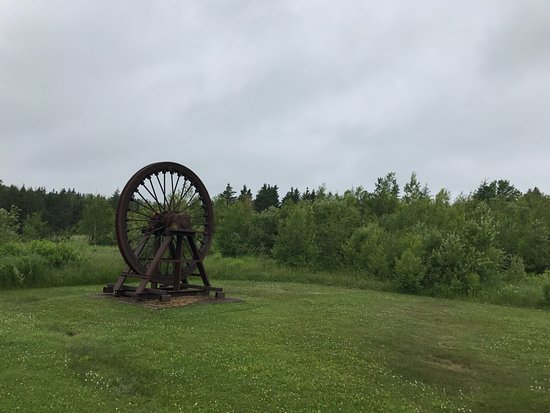
Each time the miners climbed up the shaft to escape they were forced to return to the bottom, 110 feet below, until the fire burned out hours later and they could finally exit the mine.
#nspoli #cbpoli #capebreton #novascotia
#nspoli #cbpoli #capebreton #novascotia
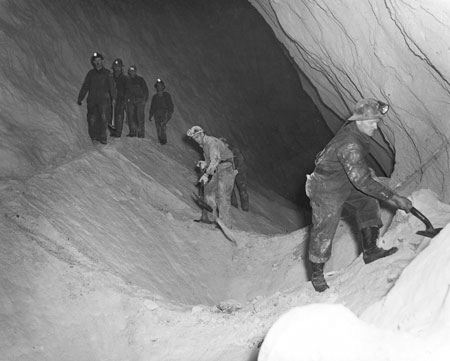
By 1948 the mine was producing 50,000-60,000 tons of #salt annually, and had its own 10-mile railway, with the salt hauled out by diesel locomotives.
#nspoli #cbpoli #capebreton #novascotia
#nspoli #cbpoli #capebreton #novascotia

The company also had shipping facilities on #Tatamagouche Bay, near the mine site, with a warehouse that had a capacity of over 10,000 tons. Vessels up to 3,500 tons could be accommodated.
#nspoli #cbpoli #capebreton #novascotia
#nspoli #cbpoli #capebreton #novascotia

Over the years the salt was used a variety of ways, including the preservation of food, the processing of steel for ship’s plates and in the #salt-fish industry.
#nspoli #cbpoli #capebreton #novascotia
#nspoli #cbpoli #capebreton #novascotia
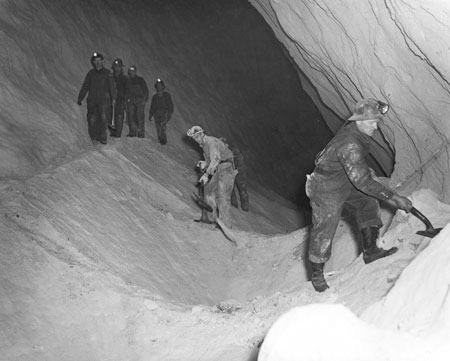
Chambers was a pioneer in investigating the use of salt on roads, and the company eventually convinced the Ontario Government to try it in the 1950s. Ontario became a key market for the company as the practice was adopted. Today, road #salt reduces crashes on winter roads by 88%. 

With the deposit at #Malagash being nearly exhausted, the company explored for other deposits, eventually finding a massive deposit in #Pugwash.
#nspoli #cbpoli #capebreton #novascotia
#nspoli #cbpoli #capebreton #novascotia

Work on a shaft in #Pugwash began in 1954 and the mine there opened in 1959, the same year the #Malagash mine shut down after producing two million tons of #salt.
The Pugwash mine is still in operation, providing all of #NS' road salt and keeping #NovaScotians safe each winter.
The Pugwash mine is still in operation, providing all of #NS' road salt and keeping #NovaScotians safe each winter.

#Salt brine was also discovered in a well at #Nappan, just west of #Amherst, in 1927. It was thought initially that the location might produce oil, but drilling was unproductive.
#nspoli #cbpoli #capebreton #novascotia
#nspoli #cbpoli #capebreton #novascotia

Later tests uncovered the existence of huge underground salt deposits instead and these have been worked by solution mining since 1947.
#nspoli #cbpoli #capebreton #novascotia
#nspoli #cbpoli #capebreton #novascotia

In this process, hot water is pumped into drill holes under pressure and the resulting salt brine is pumped back out, then sent through a settling and evaporation process at the surface to produce a high-purity #salt.
#nspoli #cbpoli #capebreton #novascotia
#nspoli #cbpoli #capebreton #novascotia

Farmer Peter Murray did eventually find a good well that provided water for his cows, but it wasn’t easy - 14 consecutive drilled wells tapped brine, not drinkable water, an indication of just how big the #salt deposit in #Malagash was.
#nspoli #cbpoli #novascotia #capebreton

#nspoli #cbpoli #novascotia #capebreton


• • •
Missing some Tweet in this thread? You can try to
force a refresh





